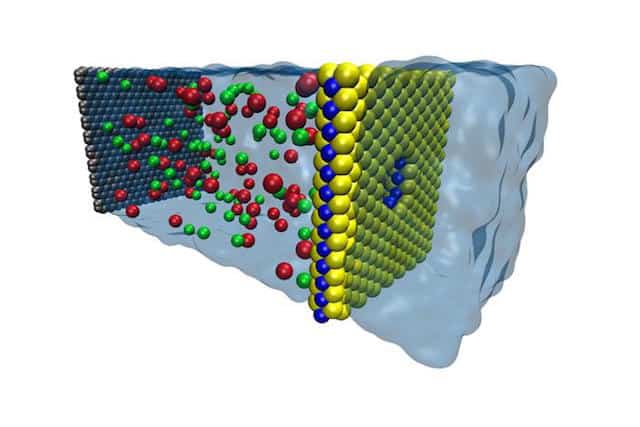In a study published in Nature Communications, the Illinois team modelled various thin-film membranes and found that MoS2 showed the greatest efficiency, filtering through up to 70 per cent more water than graphene membranes.
“Even though we have a lot of water on this planet, there is very little that is drinkable,” said study leader Narayana Aluru, a U. of I. professor of mechanical science and engineering. “If we could find a low-cost, efficient way to purify sea water, we would be making good strides in solving the water crisis.
“Finding materials for efficient desalination has been a big issue, and I think this work lays the foundation for next-generation materials. These materials are efficient in terms of energy usage and fouling, which are issues that have plagued desalination technology for a long time,” Aluru said in a statement.
Most available desalination technologies rely on reverse osmosis, a process that yields relatively small amounts of fresh water.
“Reverse osmosis is a very expensive process,” Aluru said. “It’s very energy intensive. A lot of power is required to do this process, and it’s not very efficient. In addition, the membranes fail because of clogging. So we’d like to make it cheaper and make the membranes more efficient so they don’t fail as often. We also don’t want to have to use a lot of pressure to get a high flow rate of water.”

One way to increase the water flow is to make the membrane thinner, since the required force is proportional to the membrane thickness. Researchers have been looking at nanometre-thin membranes such as graphene. However, graphene presents its own challenges in the way it interacts with water.
According to U. of I. Aluru’s group has previously studied MoS2 nanopores as a platform for DNA sequencing and decided to explore its properties for water desalination. Using the Blue Waters supercomputer at the National Center for Supercomputing Applications at the U. of I., they found that a single-layer sheet of MoS2 outperformed its competitors thanks to a combination of thinness, pore geometry and chemical properties.
“MoS2 has inherent advantages in that the molybdenum in the centre attracts water, then the sulphur on the other side pushes it away, so we have much higher rate of water going through the pore,” said graduate student Mohammad Heiranian, the first author of the study. “It’s inherent in the chemistry of MoS2 and the geometry of the pore, so we don’t have to functionalize the pore, which is a very complex process with graphene.”
In addition to the chemical properties, the single-layer sheets of MoS2 have the advantages of thinness, requiring much less energy, which in turn reduces operating costs. MoS2 is also a robust material, so even such a thin sheet is able to withstand the necessary pressures and water volumes.
The Illinois researchers are establishing collaborations to experimentally test MoS2 for water desalination and to test its rate of fouling, or clogging of the pores, a major problem for plastic membranes. MoS2 is a relatively new material, but the researchers believe that manufacturing techniques will improve as its high performance becomes more sought-after for various applications.
“Nanotechnology could play a great role in reducing the cost of desalination plants and making them energy efficient,” said Amir Barati Farimani, who worked on the study as a graduate student at Illinois and is now a postdoctoral fellow at Stanford University. “I’m in California now, and there’s a lot of talk about the drought and how to tackle it. I’m very hopeful that this work can help the designers of desalination plants. This type of thin membrane can increase return on investment because they are much more energy efficient.”
The paper “Water desalination with a single-layer MoS2 nanopore” is available online at: http://www.nature.com/ncomms/2015/151014/ncomms9616/full/ncomms9616.html.










Comment: Engineers must adapt to AI or fall behind
A fascinating piece and nice to see a broad discussion beyond GenAI and the hype bandwagon. AI (all flavours) like many things invented or used by...